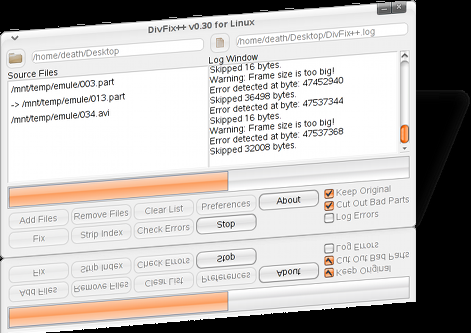
#Divfix linux plus
The vulnerability is caused by the computation that writes data past the end of the intended buffer the computation is part of the image conversion engine when processing Enhanced Metafile Format Plus (EMF+) data. An attacker can potentially leverage the vulnerability to corrupt sensitive data or execute arbitrary code.Īn issue was discovered in Adobe Acrobat Reader 2018.009.20050 and earlier versions, 2017.011.30070 and earlier versions, 2015.006.30394 and earlier versions. The vulnerability is caused by the computation that writes data past the end of the intended buffer the computation is part of the JavaScript API related to color conversion.


The vulnerability is caused by the computation that writes data past the end of the intended buffer the computation is part of the image conversion module that handless TIFF data. The vulnerability is caused by the computation that writes data past the end of the intended buffer the computation is part of the document identity representation. The vulnerability is caused by the computation that writes data past the end of the intended buffer the computation is part of the XPS engine that adds vector graphics and images to a fixed page.
#Divfix linux code
A crafted input may lead to a remote denial of service attack or an arbitrary code execution attack.Ĥ Acrobat, Acrobat Dc, Acrobat Reader and 1 moreĪn issue was discovered in Adobe Acrobat Reader 2018.009.20050 and earlier versions, 2017.011.30070 and earlier versions, 2015.006.30394 and earlier versions.
#Divfix linux how to
The output with no additional options shows there are differences between the files and gives instructions how to modify them.There is a heap based buffer overflow in tools/tiff2pdf.c of LibTIFF 4.0.8 via a PlanarConfig=Contig image, which causes a more than one hundred bytes out-of-bounds write (related to the ZIPDecode function in tif_zip.c). If you want it to ignore case, add the -i option to the command: diff -i file1 file2įor example, if we create one file with the following lines: Apple i Optionīy default, diff is case sensitive. In the example above, the output instructs that Apple and Watermelon should be removed, whereas Peach, Apple, and Melon should be added. The lines below display the content of the files and how to modify example1.txt to make it identical to example2.txt. Lines displaying information about the first file begin with -, while lines indicating the second file start with +++. Now, let's examine the output for the sample files in the unified format: To do so, use the command: diff -u file1 file2 The unified format is an option you can add to display output without any redundant context lines. Therefore, in the example above, you should delete Apple from the first line, replace Watermelon with Melon in line four, and add Peach and Apple to lines two and three. If there is no symbol, the line remains the same. ! (exclamation mark) – it needs to be changed to the corresponding line from the second file. + (plus) – it needs to be added to the first file. (minus) – it needs to be deleted from the first file. The beginning of each line instructs how to modify example1.txt to make it the same as example2.txt.

The rest of the lines list the content of the files. **************** - is used just as a separator.īefore listing the lines from each file, the output starts with the line range of the files: *** 1,5 **** The first two lines display the name and timestamp of both files: *** example1.txt 10:53:30.700640904 +0100 Lines displaying information about the first file begin with ***, while lines indicating the second file start with.


 0 kommentar(er)
0 kommentar(er)
